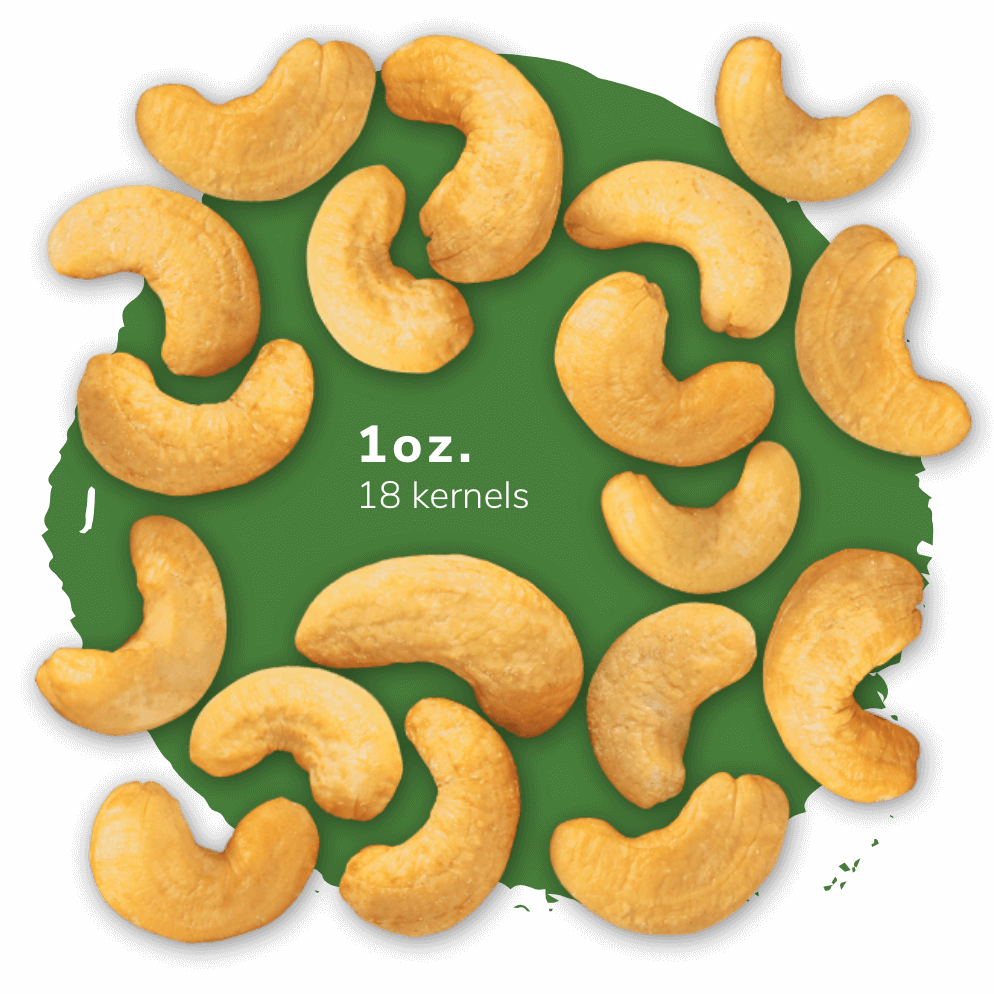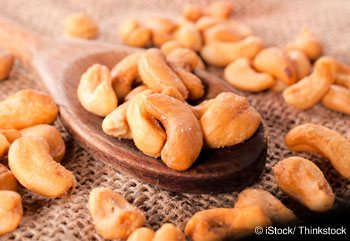
- 1 oz cashew nutrition facts skin#
- 1 oz cashew nutrition facts full#
- 1 oz cashew nutrition facts trial#
Nut consumption and incidence of cardiovascular diseases and cardiovascular disease mortality: A meta-analysis of prospective cohort studies. Department of Agriculture, Agricultural Research Service. A 1-ounce serving of cashews contains: Calories: 165 Protein: 5 grams Fat. Cashews, unsalted contains 12 g of saturated fat and 0 mg of cholesterol per serving. The latter is 6.3 g sugar and 3.8 g of dietary fiber, the rest is complex carbohydrate. This serving contains 62 g of fat, 19 g of protein and 41 g of carbohydrate. Innit helps partners innovate at the intersection of Food and Health, with actionable assistance at every. Cashews, unsalted contains 758 calories per 130 g serving. Nut consumption in relation to cardiovascular disease incidence and mortality among patients with diabetes mellitus. Unlock the power of personalized food information. Bioactives and health benefits of nuts and dried fruits.
1 oz cashew nutrition facts full#
Get full nutrition facts and other common serving sizes of Dry Roasted Cashew Nuts including 1 oz and 100 g. Calorie Breakdown: 64 fat, 26 carbs, 10 prot. Primary prevention of cardiovascular disease with a Mediterranean diet supplemented with extra-virgin olive oil or nuts. There are 172 calories in 30 grams of Dry Roasted Cashew Nuts. There are 154 calories in 1 ounce of Honey Roasted Cashew Nuts.
1 oz cashew nutrition facts trial#
Effect of peanut consumption on cardiovascular risk factors: A randomized clinical trial and meta-analysis. 16 g of Cashew butter contains 0.00 mcg vitamin A, 0.0 mg vitamin C, 0.00 mcg vitamin D as well as 0.79 mg of iron, 9.76 mg of calcium, 72 mg of potassium. Cashew butter contains 1.7 g of saturated fat and 0 mg of cholesterol per serving. Dietary factors and risks of cardiovascular diseases: An umbrella review. The latter is 1.5 g sugar and 0.5 g of dietary fiber, the rest is complex carbohydrate. See individual products for nutrition information. Lipid lowering with diet or dietary supplements. Keep in mind that cheese does contain carbs, about 1 gram per ounce, and we. Oxidative stress biomarkers, nut-related antioxidants, and cardiovascular disease. Associations between nut consumption and inflammatory biomarkers. Department of Health and Human Services and U.S.


Juices, syrups, preserves, wine or liquors are obtained from the stalk or “apple.” However, the main commercial use is the cashew nut itself. convert value from 1/4 of a cup amount, or 50g, 1 fl-oz servings, 100g, even US legal nutrition labeling cup (240ml/cup). Some brands may have as little as 1 gram per 8-ounce serving, while others may provide up to 5 grams. Cashew milk is also a great source of calcium, iron, and vitamins D and E. Today the principal producing countries of cashews are India, Brazil, Vietnam and Mozambique. Apart what’s in the 100 natural raw type of cashew nuts nutrition facts information table, use the cashew nuts calorie counter to calculate dietary and nutritional information for any amount of cashew nuts. One cup (8 ounces) of cashew milk provides 156 calories, 4.5g of protein, 10.5g of carbohydrates, and 11g of fat.
1 oz cashew nutrition facts skin#
The cashew fruit consists of two distinct parts: a fleshy stalk in the form of a pear – also called the cashew apple – with a brilliant yellow or red skin that can measure from 5 to 10 cm and a gray-brown colored nut (the cashew) in the shape of a kidney, which hangs from the lower end of the stalk or “apple.” Later, Portuguese colonists brought cashews to territories in East Africa (Mozambique) and India (Goa), where its cultivation extended to Indonesia and the Philippines. It is likely that Spanish sailors first introduced the cashew to Central America in the sixteenth century. Cashews are believed to have originated in the northeast of Brazil, near the Equator.


 0 kommentar(er)
0 kommentar(er)
